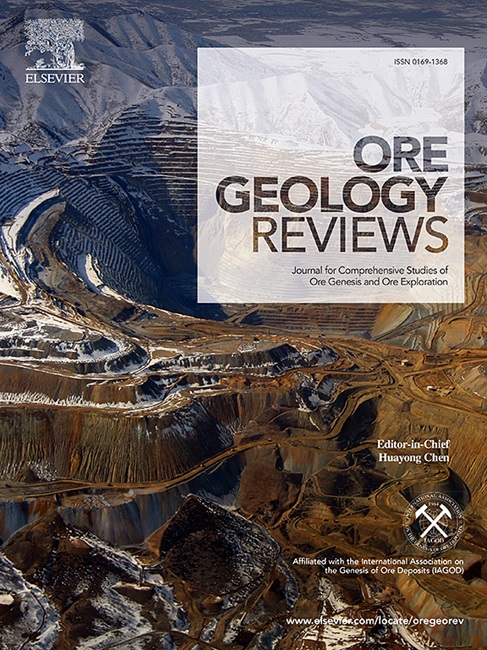A novel method for the identification of geochemical anomalies with emphasis on addressing the problem of elemental background variation using Pb deposits in Shaoshan, central China, as a case study
IF 3.2
2区 地球科学
Q1 GEOLOGY
引用次数: 0
Abstract
Most currently available methods for identifying geochemical anomalies using machine/deep learning algorithms ignore the issue of elemental background variation. This study exemplifies the identification of Pb anomalies in regional stream sediments from Shaoshan, central China, by utilizing a deep autoencoder (DAE). The focus is on applying this algorithm to detect geochemical anomalies in areas with varying geochemical background of elements. Firstly, we grouped the stream sediment samples into seven clusters using the Expectation-Maximization (EM) clustering algorithm, effectively minimizing the influence of elemental background variation. Subsequently, elements associated with Pb mineralization in groups one to seven were determined through robust principal component analysis (RPCA): Bi-Li-Sn-Pb, Li-Pb-MgO, As-Nb-Pb, Nb-Pb-Zn-Al2O3, Li-Pb-Al2O3-Fe2O3, Ag-Pb-CaO, and Ag-Bi-Li-Pb-Sb-SiO2. The elemental data for each group were then input into the DAE respectively to calculate the reconstruction error, with a threshold value of 0.24 established to delineate Pb anomalies. The identified anomalies corresponded to the known Pb deposits with an accuracy of 89%. In comparison to the DAE method, the combined approach offers a more effective means of identifying geochemical anomalies. This is primarily evident in its ability to eliminate false anomalies in areas with high background while also detecting weak anomalies in regions with low background. The integration of the EM clustering algorithm with machine/deep learning techniques for anomaly detection can significantly enhance the accuracy of geochemical anomaly identification.

求助全文
约1分钟内获得全文
求助全文
来源期刊

Ore Geology Reviews
地学-地质学
CiteScore
6.50
自引率
27.30%
发文量
546
审稿时长
22.9 weeks
期刊介绍:
Ore Geology Reviews aims to familiarize all earth scientists with recent advances in a number of interconnected disciplines related to the study of, and search for, ore deposits. The reviews range from brief to longer contributions, but the journal preferentially publishes manuscripts that fill the niche between the commonly shorter journal articles and the comprehensive book coverages, and thus has a special appeal to many authors and readers.
 求助内容:
求助内容: 应助结果提醒方式:
应助结果提醒方式:


